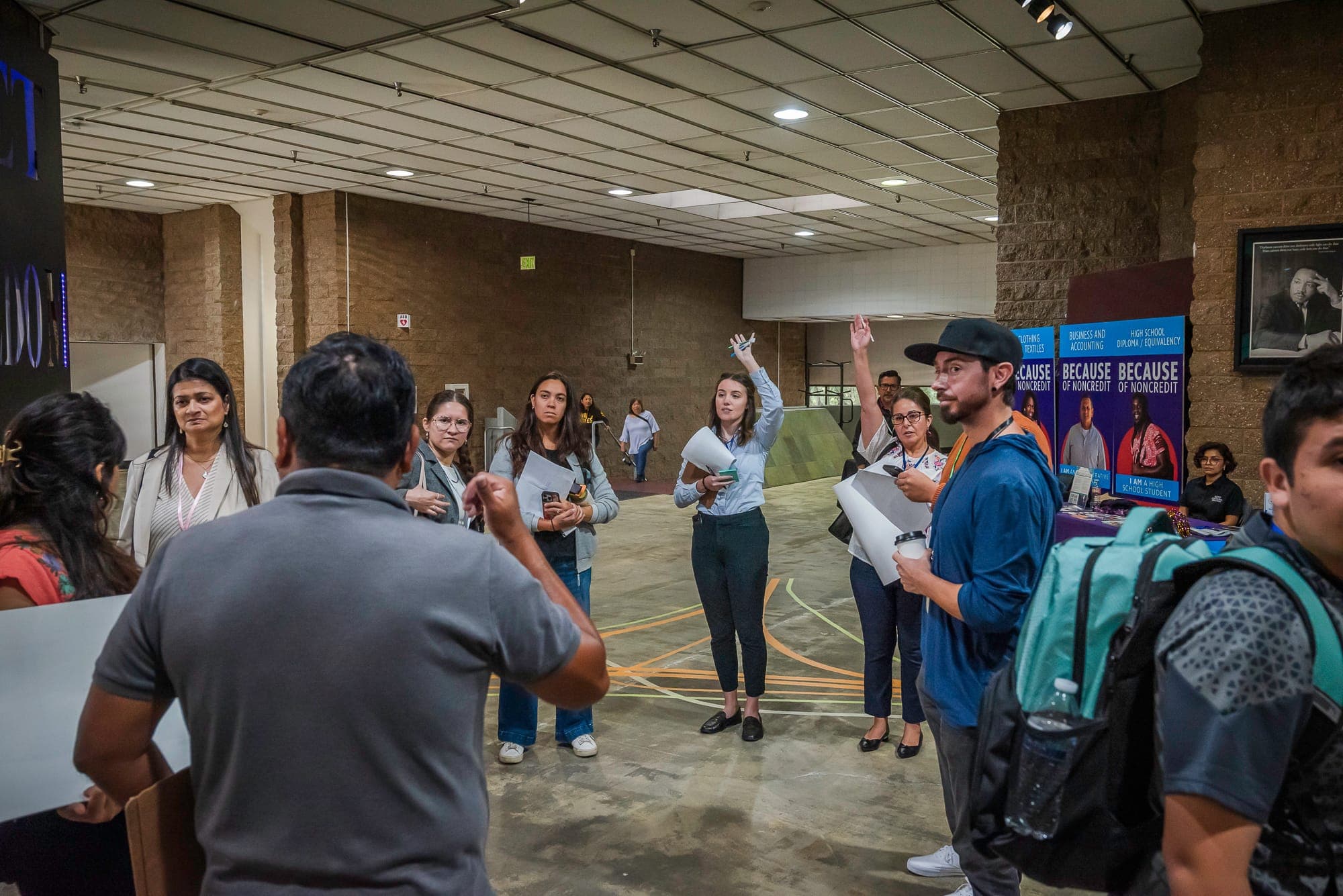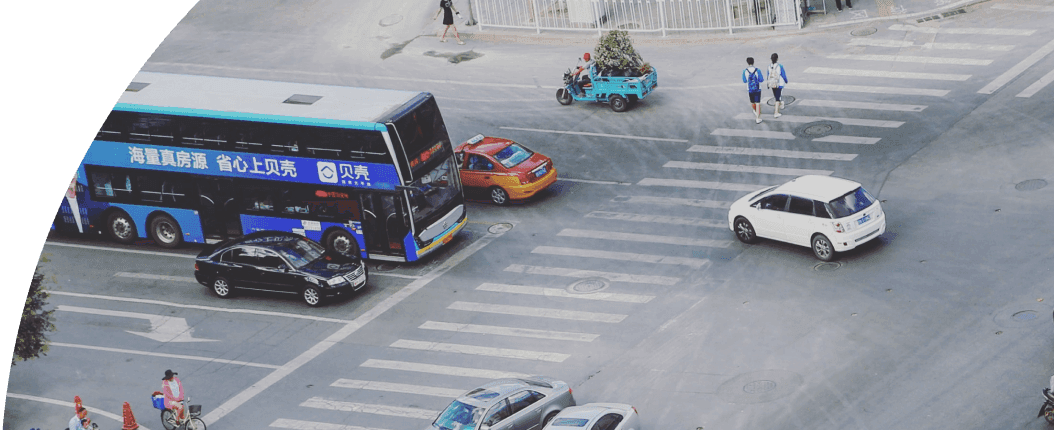
News
By Raveena John, July 30, 2025
The Smart Growth Network’s latest quarterly discussion explored how communities are using infrastructure to prepare for extreme weather. Participants learned about a community-led resilience hub and a stormwater credit trading program to promote green infrastructure in Washington, DC, and a holistic flood resilience project in Kansas City, MO.
The Smart Growth Network (SGN) is a national alliance of advocates, practitioners, policymakers, and local leaders working towards a shared vision for land use and infrastructure policies and actions that result in healthy, sustainable, and prosperous communities for all. SGN’s quarterly discussions cover a variety of topics related to smart growth, including smart growth for rural places and community data strategies. Hosted by Urban Land Institute (ULI), this discussion focused on building resilience in the face of extreme weather, from blue green infrastructure to community infrastructure, and the partnerships necessary for this work.
Learn more about building for resilience in Smart Growth America’s new Housing for Havens report
Rachel MacClery, Executive Director of the ULI Randall Lewis Center for Sustainability in Real Estate, kicked off the discussion with a presentation of ULI resources on resilience. She uplifted the work of the Water Wise Development Coalition, which supports conversations between the public and private sectors to advance policies and building strategies for drought resilience. Additionally, she shared information on convenings held by the Lewis Center Sustainability Exchange, which cover sustainability topics ranging from innovative technology to building operations, as part of ULI’s Lewis Center.
The panel at the center of this discussion looked at how communities are using infrastructure to prepare for extreme weather. Moderated by Lindsay Brugger, vice president of resilience at ULI, the panel included:
- Matt Johnson, a Supervisory Environmental Protection Specialist at Washington, DC’s Department of Energy and the Environment (DOEE)
- Dr. Estelle-Marie Montgomery, Executive Director of the FH Faunteroy Center & Resilience Incubator; and
- Andy Sauer, National Stormwater Management Practice Leader at engineering firm Burns & McDonnell
Matt Johnson presented Washington, DC’s stormwater retention credit market, a financing model that accelerates green stormwater infrastructure where it is needed the most. DC has significant challenges with stormwater, such as flooding, erosion, and pollution. To mitigate some of these impacts, DC’s stormwater rule requires redevelopment projects to manage stormwater with green infrastructure. Since not all locations are able to meet these requirements on site, while others may have the space to build more green infrastructure than is required, the city’s credit market turns this mismatch into a supply and demand solution. Landowners can voluntarily install green infrastructure to generate credits that can be sold to property owners who can’t meet their stormwater requirements on site. This innovative market structure can be a model for urban stormwater improvement elsewhere.
Andy Sauer focused on one particular effort in Kansas City, MO: the stormwater improvement project in the historic Westport neighborhood. Flooding is common in this neighborhood, as Mill Creek was buried into the sewer system and paved over as Mill Street when the area was developing. The solution to this flooding challenge is holistic systems planning and design that connects resilience and sustainability. Looking at the whole system, Sauer’s team designed infrastructure that would “capture, control, and convey” stormwater. This approach holds runoff underground during a storm and then slowly releases it, mitigating flooding and erosion. The Westport project includes green infrastructure and large underground cisterns to store stormwater beneath Dr. Jeremiah Cameron Park. When designing the system, engineers on Sauer’s team created a model of the flood events and then calibrated the model with photos of flooding from the community. This both validated the model and helped build buy-in and trust with the neighborhood.
Dr. Montgomery brought in the social component of resilience by sharing the development of Washington DC’s first community-led resilience hub: the FH Faunteroy Center & Resilience Incubator. According to the DOEE, these hubs are “public-serving facilities that provide information and services to build resilient communities before, during and after emergency events.” In 2017, DOEE approached Ward 7, an area of the city where 87 percent of single-family homes are in the floodplain, and the community not only liked the idea, but decided the best way to build trust with DOEE was to take the process over. The community coalition identified a community-based organization to lead the planning process, which resulted in constructing 7,000 square feet of programmable space that includes maker spaces, community gathering areas, a business center, and a health & wellness center—all built to withstand potential floods in this flood-vulnerable area while building community resilience.
After the panel, attendees had the opportunity to engage with the panelists and learn more about their organizations’ efforts. A key theme discussed was strategies to build coalitions around these projects that include public and private actors as well as community buy-in. Panelists noted that public initiative was crucial, as it sends a message to the private sector and to communities that threats from extreme weather are serious—and so are efforts to address them. Panelists also highlighted the need to emphasize the impacts of extreme weather on all stakeholders. For community members, that means listening to what their top concerns are and being willing to let their input guide the project vision. For the private sector, that means discussing the costs that preparing for and recovering from extreme weather may impose on their activities and the benefits of collaborating to address them.
In closing statements, panelists again emphasized a need to work holistically, looking beyond traditional approaches to resilient infrastructure by incorporating green components and advancing community social resilience. New and innovative solutions, although they may garner negative feedback, can also sometimes be the best approach to creating more resilient communities.
Related News

© 2025 Smart Growth America. All rights reserved
Site By3Lane Marketing












